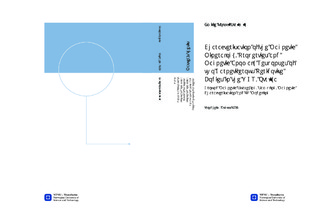Characterisation of the Magnetic Mineralogy, Properties and Magnetic Anomaly Responses of two Garnetiferous Peridotite Bodies in the WGR, Otrøya: Ground Magnetic Surveying, Sampling, Magnetic Characterisation and 2D Modelling
Master thesis
Permanent lenke
http://hdl.handle.net/11250/236323Utgivelsesdato
2014Metadata
Vis full innførselSamlinger
Sammendrag
Information on magnetisation of earth s crust comes from the study of magnetic anomalies measured at various elevations using ground, airborne and satellite data, as well as studies of deep-seated rocks exposed at the surface. In the Western Gneiss Region (WGR), western Norway, two well exposed bodies of garnetiferous peridotites lay on the island Otrøya. The WGR is a 25.000 km2 window of Proterozoic Baltica continental crust exposed in the Scandinavian Caledonides, and is one of the largest exposures of deeply subducted rocks on earth. The two bodies exposed on Otrøya contain evidence of the early stability of Archean tectonometamorphic megacrystic mineral assemblages that include high P/T enstatites and majoritic garnet (presently exsolved into Proterozoic and Scandian tectonometamorphic assemblages) (Van Roermund, 2008). The magnetic properties and anomaly responses of these peridotites and their immediate enclosing bedrocks were investigated by sampling orientated blocks, conducting magnetic measurements in field and at lab, as well as conducting a ground magnetic survey. This provides us with information on the magnetic properties of deeply subducted mantle fragments, and adds to the knowledge of what is magnetic in the lower crust and lithospheric mantle.The study of the two peridotite bodies at Otrøya displays several morphologies of magnetite, mostly displaying as discrete forms within seams and cracks, but also as well-defined rims around chromites. The remanent intensity and susceptibility of the rocks are low, however the remanent intensity is somewhat varying. The directions of remanent magnetisation within measured specimens are both negative and positive with positive directions commonly displaying the same direction as the ambient field as well as commonly carrying weaker intensities than the negative. All of the above could be indicative of several stages of magnetite creation, and/or several events of recording of natural remanent magnetisation. The immediate constricting bedrocks displayed substantially higher remanent and induced intensities. Within the measured specimens both intensities were varying with the remanence displaying the largest variance in addition to showing both positive and negative directions. This was reflected in the anomaly map created from the ground magnetic survey due to anomalies, both high and low, displaying within these bedrocks. However, the peridotites correlate with wide anomaly lows. With 2D modelling a magnetic profile over the area was investigated with susceptibility and geometry of the bodies as input parameters. It became evident that the susceptibility contrast of the peridotites and the constricting bedrocks, as well as their geometries, could create anomaly lows as displayed in the anomaly map. However, it could not explain the most negative anomaly responses an indication on remanence being of importance.
